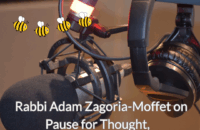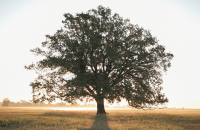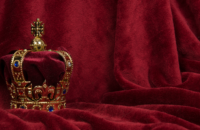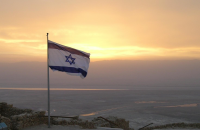Book Review: Jacob’s Tears – The Priestly Work of Reconciliation by Mary Douglas
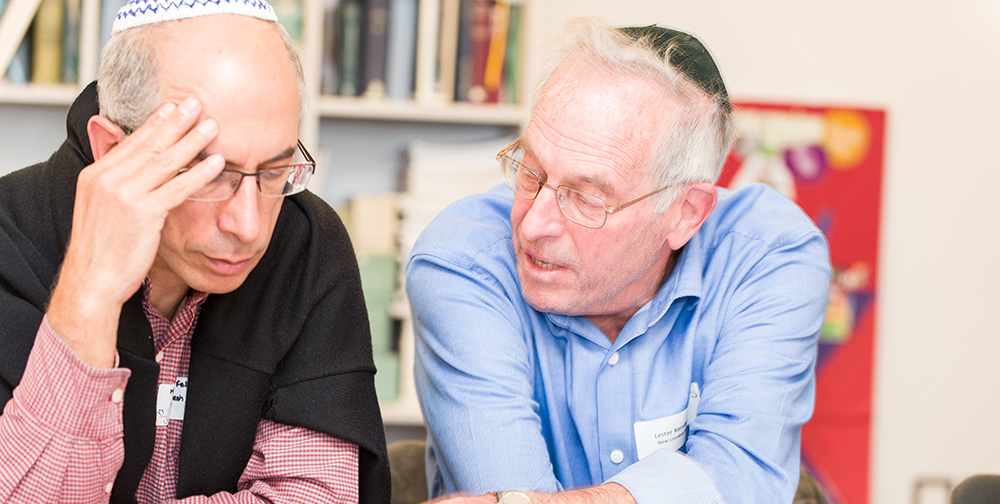
This article is part of our ‘On My Jewish Bookshelf’ series that takes a look at the Jewish cultural classics and how they have influenced us personally, and as Masorti Jews. If you are interested in writing a piece for this series please contact Olivia Lesser at [email protected].
When I was asked to contribute to this series, I proposed a rarity, a book written by an academic that was unputdownable. However, that had already been taken. So, I opted for another treatise on theTenach, which contains some astonishing ideas and was written by a non-Bible scholar, Professor Dame Mary Douglas. She died nine years ago, aged 86.
Brought up and educated as a Catholic, Mary went up to St Anne’s College, Oxford in 1939 to read Politics, Philosophy and Economics. She then worked in the Colonial Office where she met social anthropologists. Intrigued, she returned to Oxford after the war to take a doctorate in anthropology.
1966 saw the publication of her most famous book, “Purity and Danger”. What captured the public’s imagination was her explanation for the “abominations” in the book of Vayikra (Leviticus). The creatures deemed to be unclean and abominable as food had puzzled commentators for centuries. Some thought that hygiene was the explanation, but Mary argued that the rules of Kashrut expressed the Hebrew characteristics of holiness – separateness and wholeness or completeness. The creatures that were clean or holy were e.g. those that walked on the earth with cloven hoofs AND chewed the cud; and those that swam with fins AND scales. Animals such as pigs were incomplete, because they had cloven hoofs BUT did not chew the cud.
After she retired in the late 80s, the Torah became one of Mary’s principal passions for the rest of her life. 1993 saw the publication of “In the Wilderness”, in which she demonstrated that the book ofBamidbar (Numbers) comprised 12 alternate sections of law and narrative laid out in a ring composition, a chiastic structure such as ABC-CBA.
Six years later, in “Leviticus as Literature”, Mary revised her ideas on abomination. Animals that were unclean or unfit for human consumption were those that were unfit to be sacrificed to God. This suggested domesticated animals only such as goat, sheep and cow, but Devarim(Deuteronomy) also permits us to eat wild game! However, they also have a cloven hoof and chew the cud.
Mary also claimed that Vayikra was set out as a triple paradigm for Mount Sinai, the Mishkan (the Tabernacle), and the human body. Sinai consisted of a summit, centre and base; the Mishkan had three distinct parts – the Holy of Holies, the Inner Sanctuary and the Outer Courtyard; and the body was essentially procreative organs, midriff and head. Of the three models, I think that Mary was particularly passionate about the tripartite, architectural design of the Mishkan, so much so that she offers the only stories in Vayikra, both of which are violent – the deaths of Nadav and Avihu, and the stoning of the mixed-race blasphemer – as the screens between the three areas. Needless to say, Mary’s literary analyses caused a sensation amongst Biblical scholars, particularly as she was not one of them. To her credit, she always acknowledged the help of experts such as the late Professor Rabbi Jacob Milgrom, whose magnum opus was a three-part commentary on Vayikra for the Anchor Bible.
In 2004, “Jacob’s Tears” appeared. I have chosen the last of Mary’s trilogy, because she critiques her work on Vayikra and Bamidbar, and also attempts to identify the overriding motivation of the Pentateuchal authors. What I like about her writing is that she always seems prepared to re-consider her position when others offer compelling, contrary evidence.
Mary assumes that all of the Torah was edited or redacted probably around 450 BCE when the Second Temple was being constructed. In particular, she contends that Vayikra and Bamidbarpromoted the agenda of peace-loving priests who had remained in Jerusalem and who were committed to the re-unification of the country, i.e. bringing Samaria and Judea together and hence reuniting the 12 sons of Jacob. They opposed the xenophobia of the returnees from Babylon, specifically the programme of purification or ethnic cleansing introduced by the Persian-backed Ezra and Nehemiah. Mary reiterates her claim from “In the Wilderness” that these priests satirised their political struggle with the Babylonian Jews in the story of Bilaam, in which the beaten ass symbolises a down-trodden, united Israel, King Balak is the Persian king and Bilaam represents Nehemiah’s colonial governorship. I wonder if Christian universalism may have encouraged Mary to denounce Ezra’s Jewish exclusivity? The returnees won. Samaria was shunned; the 10 tribes and more specifically the sons of Joseph were abandoned; and Judaism moved on under the sole leadership of Judah, as in the days of King David. Hence the title of the book, because Jacob wept for his son Joseph when he thought that his favourite son was dead.
I am not qualified to comment on Mary’s conclusions. I just enjoy trying to understand what she has to say. Professor Robert Alter, one of the foremost experts in biblical literacy, feels that her historical analysis is much less persuasive than her anthropological arguments. Notwithstanding, he is impressed by her work on the Torah – “constantly stimulating”; “at its best deeply instructive”; and “formidable ingenuity”. He concludes that she “has performed a service” by inviting us to consider whether the Torah does not hide sophisticated, literary structures that we have forgotten how to decipher. That will do for me. I urge you to read the paperback trilogy and Richard Fardon’s biography (Routledge pb) of one of the most influential anthropologists of the last 70 years.
Nahum Gordon is one of the co-founders of Kol Nefesh Masorti Synagogue and founder of the Torah Chat bible study group. He is an informal educator with a particular interest in Tenach and Jewish history.

